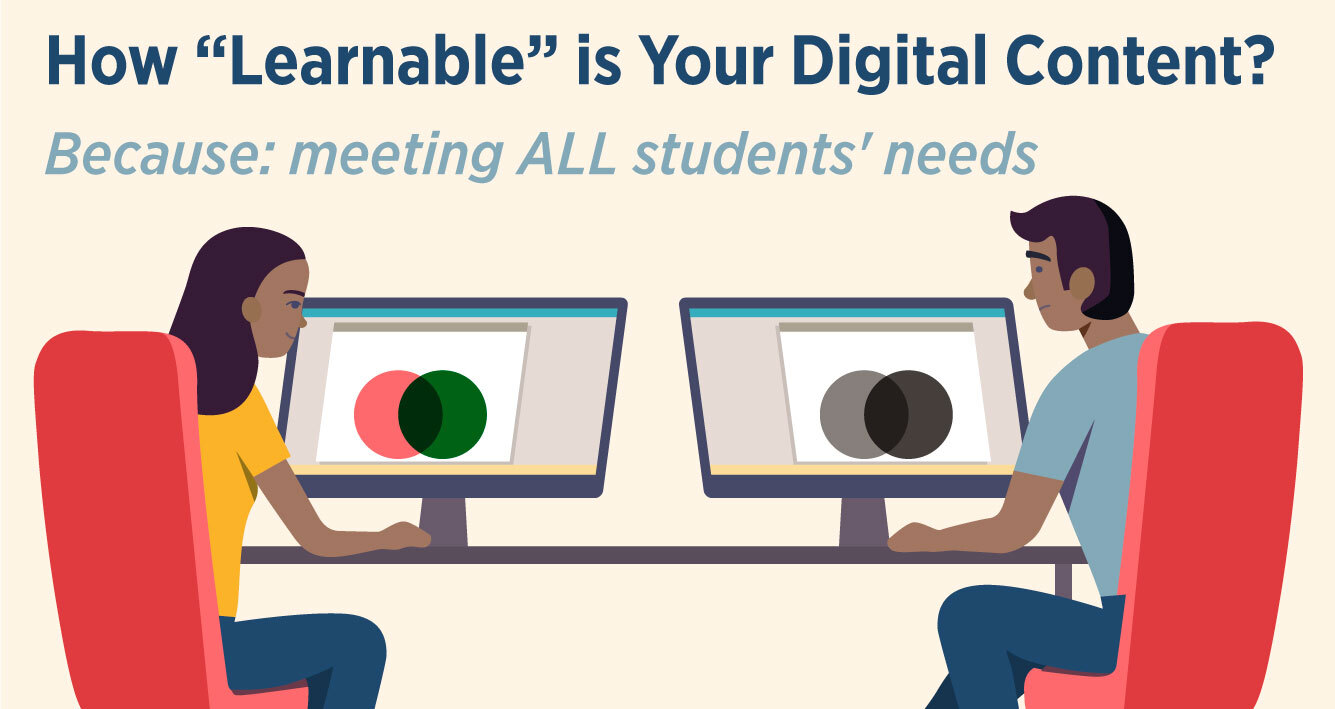Today, an important and fascinating aspect of how EdTech is evolving for higher ed. Little discussed, but hugely valuable to your student success efforts. We are focusing on both aspirational and pragmatic approaches to solving specific digital accessibility challenges that are likely not on your radar.
We’ll start here: Learning Management Systems (LMS) are designed to help faculty and students connect effectively. But what happens when the vast amount of content housed on those tools is not given full accessibility considerations?
Today’s digital classroom embraces the talents and perspectives of learners with neurodivergencies, aural impairment, visual impairment–including students who are partially or fully colorblind–and those for whom English is not their primary language, among a range of other diversities and learning differences.
But while the online classroom roster of tools has evolved, the digital content thrown into your LMS has largely failed to keep up. In fact, our current digital content is unable to provide full access to as many as 1 in 5 students in the US. And the Department of Justice is taking notice as an increasing number of institutions are facing legal challenges to “digital accessibility.” Non-compliance has consequences as seen in a number of significant lawsuits making headlines.
Join This High-Value Webinar
“Shattering Accessibility Limits in Digital Learning,” a Chronicle of Higher Edhosted webinar with visionary panelists: Gallaudet University President Roberta Cordano, DREDF Senior Staff Attorney Ayesah E. Lewis, and ansrsource President and CEO Rajiv Narayana. The webinar will be moderated byReporter Kelly Field, who covers, in detail, education and disability access for the Chronicle of Higher Ed, among other media outlets.
Register HERE. (no cost to attend and registrants will receive the recording)
Digital accessibility stopped being about just a Dark Mode toggle a long time ago, and the content passively or casually “thrown onto” your LMS by faculty with competing priorities often overlooks accessibility accommodations. The current state simply isn’t going to cut it.
Today, digital accessibility includes formatting and presenting content in a way that accommodates the vast variety of student needs. Providing alternative text for images, closed captions for videos, and text transcripts for audio content are just a few of the features that help your learners learn.
Read on for a few valuable, actionable tips and an institutional assessment process that may help you make smart decisions and engage your colleagues …
Read More

